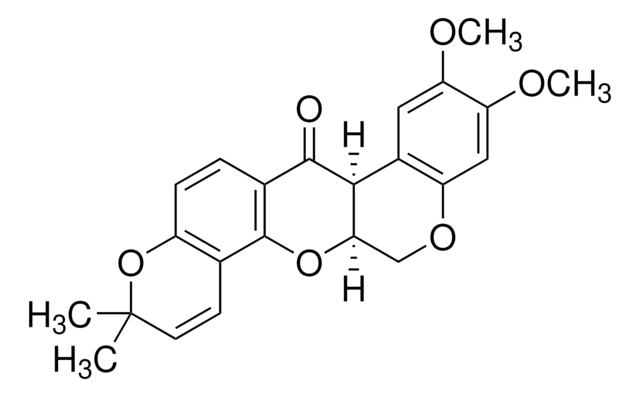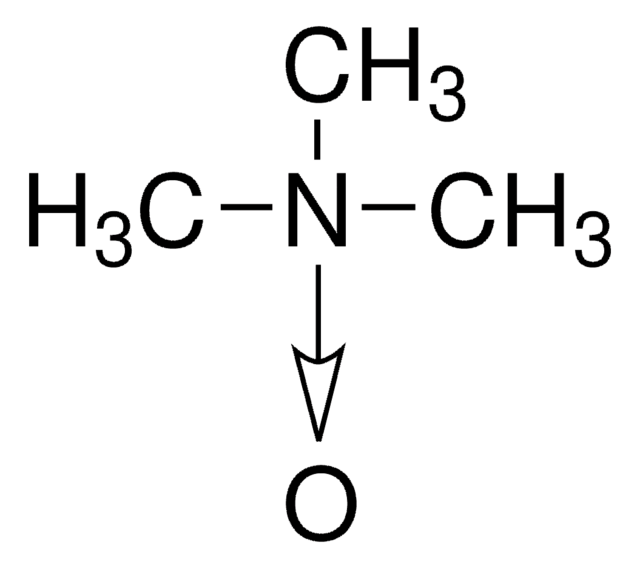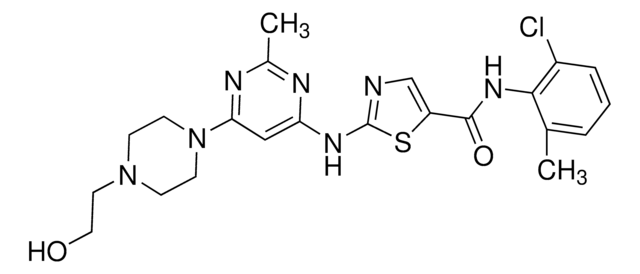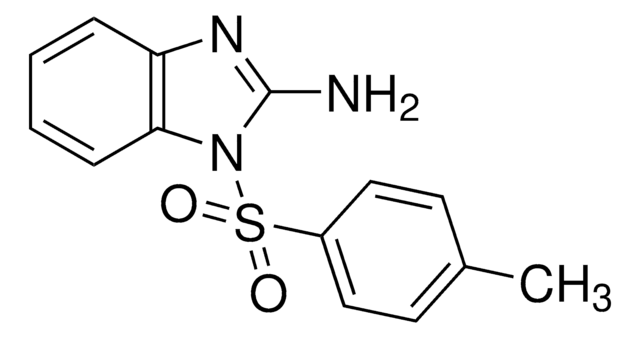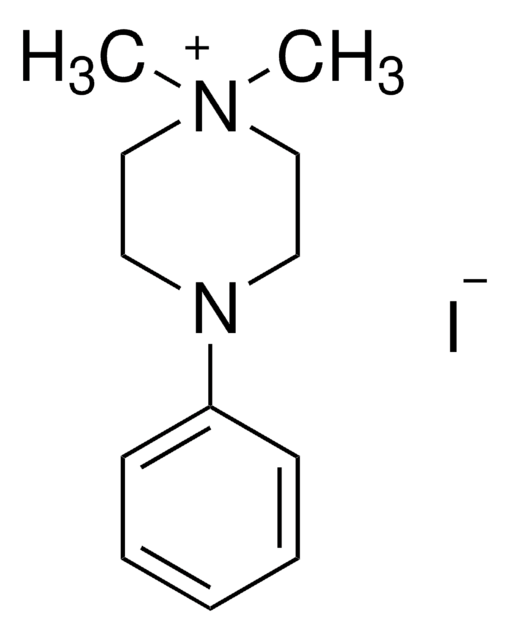D1260
Decamethonium bromide
crystalline
Sinónimos:
Decamethylene bis(trimethylammonium bromide), Decane-1,10-bis(trimethylammonium bromide)
About This Item
Productos recomendados
form
crystalline
color
off-white
mp
263-267 °C (lit.)
originator
GlaxoSmithKline
SMILES string
[Br-].[Br-].C[N+](C)(C)CCCCCCCCCC[N+](C)(C)C
InChI
1S/C16H38N2.2BrH/c1-17(2,3)15-13-11-9-7-8-10-12-14-16-18(4,5)6;;/h7-16H2,1-6H3;2*1H/q+2;;/p-2
InChI key
HLXQFVXURMXRPU-UHFFFAOYSA-L
Gene Information
human ... CHRNA1(1134) , CHRNA10(57053) , CHRNA2(1135) , CHRNA3(1136) , CHRNA4(1137) , CHRNA5(1138) , CHRNA6(8973) , CHRNA7(1139) , CHRNA9(55584) , CHRNB1(1140) , CHRNB2(1141) , CHRNB3(1142) , CHRNB4(1143) , CHRND(1144) , CHRNE(1145) , CHRNG(1146)
¿Está buscando productos similares? Visita Guía de comparación de productos
Categorías relacionadas
Application
Biochem/physiol Actions
Features and Benefits
signalword
Danger
hcodes
Hazard Classifications
Acute Tox. 3 Oral - Eye Irrit. 2 - Skin Irrit. 2 - STOT SE 3
target_organs
Respiratory system
Storage Class
6.1C - Combustible acute toxic Cat.3 / toxic compounds or compounds which causing chronic effects
wgk_germany
WGK 3
flash_point_f
Not applicable
flash_point_c
Not applicable
ppe
Eyeshields, Faceshields, Gloves, type P2 (EN 143) respirator cartridges
Elija entre una de las versiones más recientes:
¿Ya tiene este producto?
Encuentre la documentación para los productos que ha comprado recientemente en la Biblioteca de documentos.
Nuestro equipo de científicos tiene experiencia en todas las áreas de investigación: Ciencias de la vida, Ciencia de los materiales, Síntesis química, Cromatografía, Analítica y muchas otras.
Póngase en contacto con el Servicio técnico